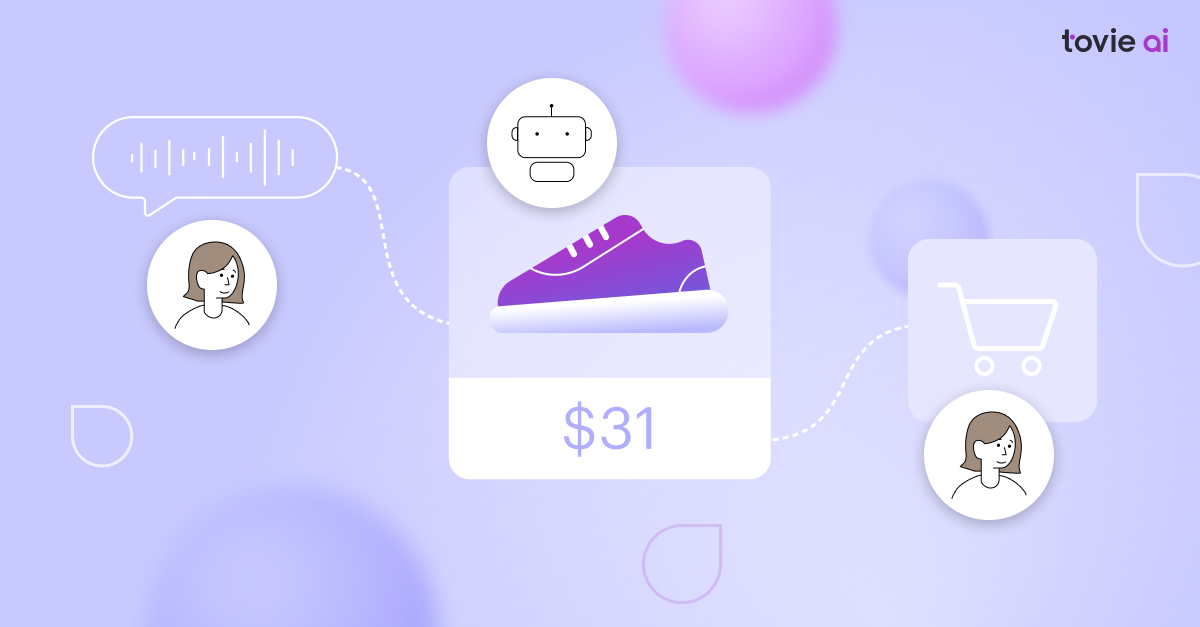
Consumer habits were among the many things in our lives the 2020 Covid-19 pandemic affected: people were locked inside their houses, in-store shopping and proximity to other people raised concerns among some 89% and 63% of shoppers respectively. Suddenly, online became the major channel for business-to-customer interaction, and physical retailers found themselves in a new reality. As a result, the e-commerce sector saw a growth rate of more than 30%.
So, retail went digital and Conversational AI technologies became one of the main drivers behind this change: Juniper Research said that with chatbots, retailers would save $439 million annually by 2023. By that time, retail sales via chatbots and other conversational interfaces are expected to reach $112 billion compared to $7.3 billion in 2019, which will make a 98% annual growth rate.
Mobile apps also propel digital transformation: retailers with no apps of their own were quick to launch them, while the digitally-savvy ones reported record downloads. In 2021, up to 50% of retailers announced their plans to make mobile a priority. Considering the fact that some 45% of U.S. users would rather use voice controls to navigate mobile apps, voice capabilities are likely to become a must over the next couple of years. A recent survey states that 35% of the U.S SMBs admitted to increased investments in voice marketing.
There are many ways how AI chatbots can transform retail: from improving business performance to reducing wait times and improving overall business performance by up to 25%. Here are a few examples of how they can do that:
AI chatbots enable businesses to keep the highest standard of customer service without hiring new employees.
Conversational agents can respond to customer queries 24/7/365. Naturally, when a customer gets assistance without waiting on hold, it enhances their satisfaction.
With virtual assistants and chatbots, retailers can easily reach out to customers and notify them about sales, launches and seasonal offerings.
Using an NLU-powered voice bot for NPS surveys, retailers can monitor customer satisfaction at a lower cost.
As you see, there are many processes and functions a retail chatbot can automate. However, many retailers are still reluctant to embrace conversational AI technology. Here are a few examples:
Many retailers still rely on customised billing and legacy CRM systems, which complicates further automation with conversational AI technologies. Digital transformation becomes torture when an array of different tools, products and technologies power the retailers’ CRM and to make changes to an order one needs to address up to 5 different systems for the necessary data.
Thus, if you want an AI-powered voice bot to take calls and tell customers their order status, you need to ensure the bot’s instant access to all the necessary systems and information, which requires making quite a few integrations. And all retailers know how pricey and time-consuming system upgrades and transitions to new platforms can be.
There are other reasons why conversational AI automation retail may cost a lot, including, customisation, large data volumes and wide assortments of products. That’s why chatbot projects are easier for big retailers. Still, conversational AI tools evolve pretty fast, enabling SMB retailers to start small: they can build a basic bot with graphic tools like ManyChat or DialogStudio and lower contact centre load during peak times.
Another way to start conversational AI automation in retail is to go for ready-to-use solutions that address particular needs. For example, an AI-powered shop assistant can assist customers in placing orders, checking stock and providing information about products.
If you decide to start a retail chatbot (or a voice bot) project, brace yourself for the long run: it’s more of a marathon than a sprint. You’ll need to train the chatbot quite regularly, review bot scenarios, kill what does, ’t work, add new features, launch new promo campaigns and more. The question is who will do all that? Are you willing to put together a team of your own or find a vendor to take care of that?
While conversational chatbots can benefit retailers in so many ways, things applicable to one particular business might not work for another. Thus a voice-first virtual assistant that consults customers about products would pay off for something people need regularly – beauty products, clothes, etc. However, this won’t work for something people only buy once in a few years – think cars and houses – and an NPS survey voice bot will be a much better fit.
The Conversational AI industry is growing as well as the number of successful chatbot and voice assistant implementations. It’s only a matter of a few years before conversational interfaces become ubiquitous, so AI-powered digital transformation is not something businesses can just ignore. One of the best things about conversational AI technologies is their diversity: there are efficient conversational tools and solutions that even SMB retailers can afford, along with complex enterprise-grade platforms that will fit the needs of the largest retail chains.
Ready for retail automation with Tovie AI?